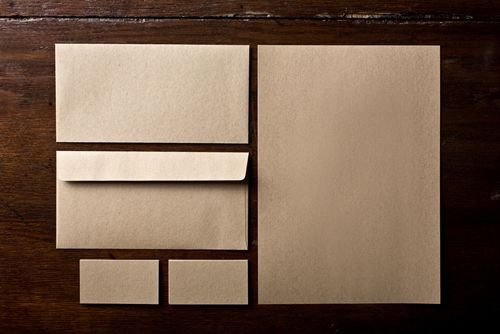Whether you’re an experienced business professional, a recent graduate trying to start a career or a small-business owner, personalized stationery is a must-have. In fact, I’ve even used personalized stationery in several non-professional social ways, from sending thank you cards to invitations and more. Like the way you dress and behave, your personalized stationery should reflect who you are as a professional and the career you have or are hoping to achieve. It should be appropriately and cleanly designed to make you seem as professional as possible. Here are some things to consider when designing your own personalized stationery:
Type of stationery
There are several different types of stationery to choose from, and they all have a variety of uses. Here are some of the options:
- Flat cards: Smaller flat cards can be used as correspondence cards, which are a good option for sending short notes, thank yous, informal invites and more. Larger flat cards are a good size for correspondence sheets, which should contain longer notes and letters.
- Folded cards: Though folded stationery cards are often referred to as “informals,” they’re actually slightly more formal than flat cards and are great for use within a business or for more personal business-to-customer relations. Use them for formal business invitations, sending customers thank you cards or for complimenting an employee, for instance.
- Letter sheets: Full-sized sheets are great for longer correspondence, including for resumes and cover letters.
While it’s better to order flat and folded stationery cards for yourself, you also may want to consider purchasing a custom embosser with your monogram and information on it. An embosser can turn any letter-sized sheet of paper into personalized stationery.
Paper
The type of paper you choose to use for your stationery will say a lot about you or your business. Between satin, matte, high-gloss, linen and even felt finishes, there are several different types of paper to choose from. While glossy and satin paper are seen as more traditionally formal, these days matte and textured finishes are a good way to make you or your business stand out and seem on trend and contemporary.
Color
The color scheme is arguably one of the most important parts of your personalized stationery. White and ecru-colored paper are conventional choices. While bolder paper colors could make a statement, they can also be seen as less professional and should be chosen with caution. If you’re personalizing stationery for your business, consider using a color pulled from your logo design to add some consistency to your branding. For personal stationery, choose a color that complements your own personality and style, while keeping the design clean and simple.
Printing method
Stationery can be printed in several different ways, the two most common being embossing and engraving. All printing methods are different, and most are OK to use in both personal and professional settings. Engraving is the most traditional and is very common for business cards and other stationery. It provides amazing detail and a 3-D texture. Embossing has the same raised texture of engraving without using any ink, for a more subtle product.
Personal information
Your name or monogram or your business’ name should appear on your personalized stationery. Monograms are a popular and traditional choice, and they’re considered the most formal option. For business stationery, it’s generally OK to choose the less formal option and simply use your first and last name without a title. In many cases you should also include your address, website and phone number. When using a personalized envelope, your address should be printed on the back flap, rather than the top left corner.

